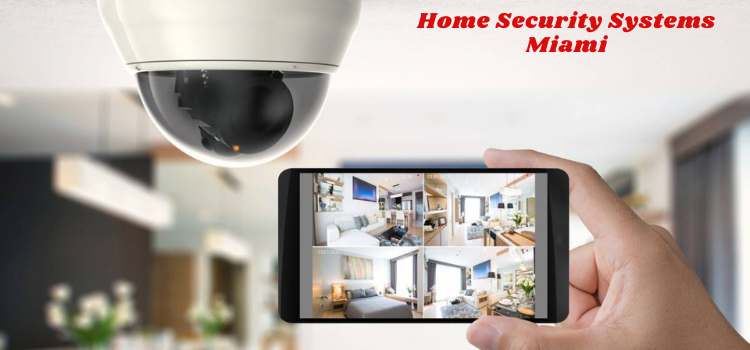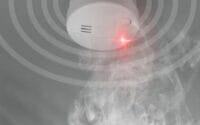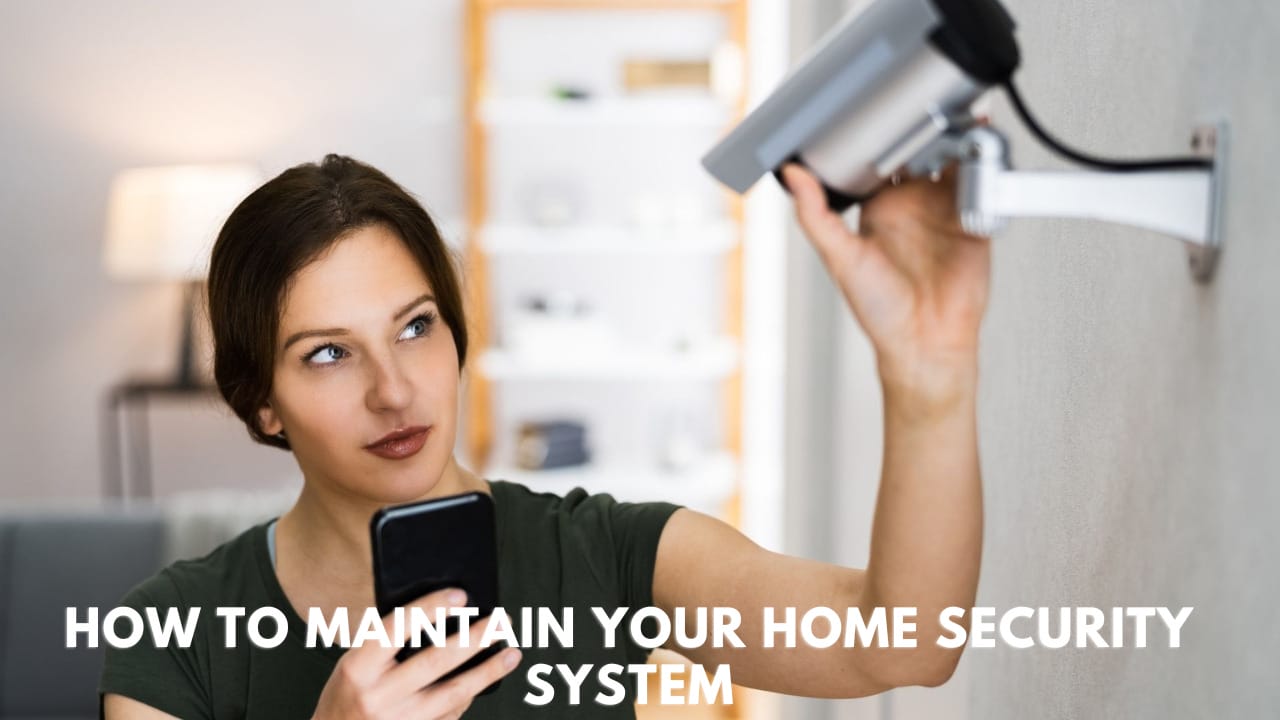How to prevent false alarms with your home security system
Introduction:
Home security systems are designed to provide peace of mind and protection for you and your loved ones. However, when your system triggers a false alarm, it can be frustrating and costly. In fact, studies have shown that false alarms can account for up to 98% of all emergency responses, wasting valuable resources and putting unnecessary stress on law enforcement and emergency services.
But what causes these false alarms, and more importantly, how can you prevent them from happening in the first place? The truth is, false alarms can be caused by a variety of factors, including poor installation, inadequate maintenance, and misconfigured system settings. In this blog post, we’ll explore the most common causes of false alarms and provide practical tips and strategies for minimizing their occurrence.
By following these simple steps and taking proactive measures to prevent false alarms, you can ensure that your home security system is working effectively and efficiently to keep you and your family safe. Whether you’re a homeowner, renter, or business owner, this guide will help you optimize your system’s performance and reduce the likelihood of false alarms.
Here are four possible subheadings for a blog post on “How to prevent false alarms with your home security system”:
1. Identify Common Causes of False Alarms: Understanding Your System’s Weaknesses
False alarms are a common occurrence with home security systems, and they can be frustrating and costly. In fact, studies have shown that false alarms can account for up to 98% of all emergency responses, wasting valuable resources and putting unnecessary stress on law enforcement and emergency services.
To prevent false alarms, it’s essential to understand the common causes of these issues. By identifying the weaknesses in your system, you can take proactive measures to minimize the likelihood of false alarms and ensure that your home security system is working effectively.
Here are some of the most common causes of false alarms:
1. **Poor Installation**: A poorly installed security system can be prone to false alarms. If the system is not installed correctly, it may not be functioning as intended, leading to unnecessary alerts.
2. **Inadequate Maintenance**: Regular maintenance is crucial to ensuring your security system operates smoothly. Failure to maintain your system can lead to false alarms, as dirt and debris can accumulate and affect the system’s performance.
3. **Misconfigured System Settings**: If your system is not configured correctly, it can lead to false alarms. This may include settings that are too sensitive or not sensitive enough, causing the system to trigger unnecessarily.
4. **Sensor Malfunctions**: Sensors are a critical component of any home security system. However, if sensors are malfunctioning or not properly calibrated, they can trigger false alarms.
5. **Power Outages**: Power outages can cause your security system to malfunction or trigger false alarms. If your system is not equipped with a backup power source, it may be unable to function properly during an outage.
6. **Weather Conditions**: Weather conditions such as strong winds, lightning storms, or heavy rain can cause false alarms. For example, strong winds can trigger motion sensors, while lightning storms can cause electrical surges that trigger the system.
7. **Environmental Factors**: Environmental factors such as pets, wildlife, or environmental changes can also cause false alarms. For example, a pet may trigger a motion sensor, while a tree branch falling on a sensor can trigger an alarm.
By understanding these common causes of false alarms, you can take proactive measures to prevent them from occurring. This may include scheduling regular maintenance checks, adjusting your system’s settings, or replacing malfunctioning sensors.
By identifying and addressing the weaknesses in your home security system, you can ensure that your system is working effectively and efficiently to protect you and your loved ones.
2. The Importance of Proper Installation and Maintenance: A Key to Minimizing False Alarms
Proper installation and maintenance are crucial components of a home security system, as they can significantly impact the system’s performance and effectiveness. In particular, a well-installed and properly maintained system is essential for minimizing false alarms, which can be frustrating and costly.
When it comes to installation, it’s essential to ensure that the system is installed correctly by a qualified professional. This includes ensuring that all components are properly connected and configured, and that the system is integrated with other devices and systems in the home.
A poorly installed system can lead to a range of issues, including false alarms, system malfunctions, and decreased performance. For example, if the system’s sensors are not properly calibrated, they may trigger false alarms due to environmental factors such as wind or wildlife. Similarly, if the system’s wiring is not properly connected, it may cause electrical issues that trigger false alarms.
In addition to proper installation, regular maintenance is also essential for minimizing false alarms. This includes checking the system’s sensors, wiring, and other components to ensure that they are functioning properly. Regular maintenance can also help identify and address potential issues before they become major problems.
Some common maintenance tasks include:
* Checking the system’s sensors to ensure that they are properly calibrated and clean
* Testing the system’s alarm functions to ensure that they are functioning correctly
* Inspecting the system’s wiring and connections to ensure that they are secure and free from damage
* Updating the system’s software and firmware to ensure that it is running with the latest features and security patches
By prioritizing proper installation and maintenance, homeowners can minimize the risk of false alarms and ensure that their security system is working effectively to protect their home and loved ones.
In addition to reducing the risk of false alarms, proper installation and maintenance can also help extend the life of the system, reduce repair costs, and improve overall performance. For example, a well-maintained system can help prevent costly repairs by identifying and addressing potential issues before they become major problems.
In conclusion, proper installation and maintenance are essential components of a home security system. By prioritizing these factors, homeowners can minimize the risk of false alarms, ensure that their system is working effectively, and protect their home and loved ones from potential threats.
3. Adjusting Your System’s Sensitivity: The Fine Line Between Protection and False Alarms
When it comes to home security systems, finding the right balance between protection and false alarms is crucial. A system that is too sensitive can trigger unnecessary alerts, while a system that is too insensitive can leave your home vulnerable to potential threats. This is where adjusting your system’s sensitivity comes in.
Adjusting your system’s sensitivity involves fine-tuning the settings to ensure that the system is triggered only when necessary. This means striking a balance between detecting potential threats and minimizing false alarms.
Here are some tips to help you adjust your system’s sensitivity:
1. **Start with the Default Settings**: Begin by setting your system’s sensitivity to the default settings recommended by the manufacturer. This will give you a baseline to work from.
2. **Experiment with Different Settings**: Once you’ve set your system to the default settings, start experimenting with different sensitivity levels. You may need to adjust the sensitivity level of individual sensors or the entire system.
3. **Pay Attention to Environmental Factors**: Environmental factors such as wind, humidity, and temperature can affect your system’s sensitivity. Take these factors into account when adjusting your system’s sensitivity.
4. **Test the System**: Test your system regularly to ensure that it is functioning correctly. This includes testing individual sensors and the entire system.
5. **Consider Professional Help**: If you’re unsure about how to adjust your system’s sensitivity, consider seeking the help of a professional security expert. They can provide personalized guidance and help you find the right balance between protection and false alarms.
Some common mistakes to avoid when adjusting your system’s sensitivity include:
* Over-sensitivity: A system that is too sensitive can trigger false alarms unnecessarily, which can be frustrating and costly.
* Under-sensitivity: A system that is too insensitive can leave your home vulnerable to potential threats.
* Failure to Test: Failing to test your system regularly can lead to false alarms and decreased performance.
By following these tips and considering professional help when needed, you can adjust your system’s sensitivity to strike the right balance between protection and false alarms. Remember, finding the right balance is crucial for ensuring that your home security system is effective and efficient.
In conclusion, adjusting your system’s sensitivity is a crucial step in ensuring that your home security system is working effectively. By following these tips and considering professional help when needed, you can find the right balance between protection and false alarms, ensuring that your home and loved ones are protected from potential threats.
4. Tips for Customizing Your System: Reducing False Alarms Through Personalized Settings
A home security system can be a powerful tool in protecting your family and property, but it’s only effective if it’s tailored to your specific needs and environment. Customizing your system through personalized settings is crucial for reducing false alarms and ensuring that your system is working effectively. Here are some tips to help you customize your system:
1. **Understand Your System’s Capabilities**: Before you start customizing your system, take the time to understand its capabilities and limitations. This will help you make informed decisions about how to set up your system.
2. **Identify Your Most Important Areas**: Determine which areas of your home are most important to protect, such as bedrooms or living areas. This will help you prioritize your system’s sensitivity settings and ensure that your system is most effective in these areas.
3. **Consider Environmental Factors**: Take into account environmental factors such as wind, humidity, and temperature that may affect your system’s sensitivity. For example, if you live in a windy area, you may need to adjust your system’s sensitivity to avoid false alarms.
4. **Adjust Sensor Settings**: Adjust the sensitivity settings of individual sensors to ensure that they are responding correctly to movement and other environmental factors. For example, you may need to adjust the sensitivity of a door sensor to avoid false alarms caused by pets or wind.
5. **Create Custom Zones**: Create custom zones within your system by dividing your home into specific areas, such as “hallway” or “living room”. This allows you to set unique sensitivity settings for each zone, ensuring that your system is responding correctly to activity in each area.
6. **Experiment with Different Settings**: Don’t be afraid to experiment with different settings until you find the right balance for your system. Remember that it’s better to err on the side of caution and adjust your system’s sensitivity too low, rather than too high.
7. **Monitor Your System’s Performance**: Regularly monitor your system’s performance to identify any issues or areas for improvement. This can help you catch any potential problems before they become major issues.
By following these tips, you can customize your home security system to meet your specific needs and reduce false alarms. Remember, a well-customized system is more effective at protecting your home and loved ones, and can also help reduce the risk of false alarms and unnecessary alerts.
In conclusion, customizing your home security system through personalized settings is crucial for reducing false alarms and ensuring that your system is working effectively. By understanding your system’s capabilities, identifying your most important areas, considering environmental factors, adjusting sensor settings, creating custom zones, experimenting with different settings, and monitoring your system’s performance, you can create a customized system that is tailored to your specific needs and environment.
Conclusion:
Preventing false alarms with your home security system is crucial to ensuring your safety, saving you money, and reducing the stress of dealing with unnecessary emergency responses. By understanding the common causes of false alarms, taking proactive measures to prevent them, and following the tips and strategies outlined in this guide, you can minimize the likelihood of false alarms and maximize the effectiveness of your home security system.
Remember, a well-maintained and properly configured system is key to preventing false alarms. By staying vigilant and addressing any issues that may arise, you can enjoy peace of mind knowing that your system is working to protect you and your loved ones.
Don’t let false alarms become a nuisance in your life. Take control of your home security system today and start enjoying the benefits of a reliable and effective protection system. By following these simple steps, you can reduce the risk of false alarms and ensure that your home security system is working as intended.
By implementing the tips and strategies outlined in this guide, you can:
* Reduce the risk of false alarms
* Minimize the stress and inconvenience of dealing with unnecessary emergency responses
* Enjoy peace of mind knowing that your system is working to protect you and your loved ones
* Save money on unnecessary emergency responses and false alarm fees
* Optimize your system’s performance and effectiveness
Don’t wait any longer to take control of your home security system. Start preventing false alarms today and start enjoying the benefits of a reliable and effective protection system.



